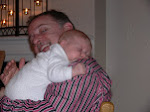I struggled to file my weekly unemployment claim. Tried twice Monday, twice again Tuesday. New York State’s system, normally fast and easy, wouldn’t load, or loaded a single page every four or five tries, then required a similar effort for the next page, then would bounce to “Internal Server Error.” On the home page new filers are told they don’t have to wait the usual week to receive benefits. The system is clearly overwhelmed. Kept trying randomly, and about 4:45 p.m. Wednesday got through.
Wednesday's battle on my Twitter feed, fought not just by trolls but by the White House’s official account: referring to Covid-19 as the “Chinese virus.” I learned that Spanish flu is so called because Spain was neutral in World War I and had no censored press, meaning their newspapers, unlike any others in Europe or the U.S., reported actual numbers of the stricken. That won’t stop Trumpians from using their racist term and reveling in its distraction from the health-care and economic calamities they helped precipitate. Meanwhile, China is stepping into the role played for four generations by the U.S. and providing supplicant countries with help (tests, equipment, experts). Soon we may be supplicating. China also just kicked out a bunch of excellent American journalists, evidence (if more were needed) of Xi’s distaste for the free flow of information. Authoritarianism, on the march from the Yangtze to the Volga to the Potomac!
Numbers, to the extent they convey anything: Covid-19 cases in the U.S.: almost 10,000, up about 3,000 each of the past two days. About 3,000 of those are in New York State (highest number in the U.S., just behind Washington per capita), and about 1,300 cases are in New York City. There were no recorded cases in the city or state as of March 1 (certainly the result of limited testing).
Realizing the outbreak’s severity is like watching a sunrise: passing minutes affect my ability to see clearly. Tuesday I went to a Gap Outlet on Flatbush Avenue to replace a pair of jeans. Shop workers outnumbered customers; changing rooms were closed. Still, I was glad to buy the jeans. Today I suggested buying running shoes, my delayed response to a Christmas present promised by The Girlfriend. She said it was a bad idea. She didn’t know why New York City’s mayor (pro) and governor (con) were debating whether to follow the lead of seven Bay Area counties and shelter in place. There’s not much to debate, she said. Given possible disease curves and the state of readiness of our health care system, the only responsible path is to limit human interactions. It feels drastic, but the more extreme our social isolation, the more lives we save. She then called to cancel a couple of long-scheduled medical appointments.
She’s right, I realize. But the realization doesn’t displace a lifetime of habits. Leaving the apartment, I open the building door with my ungloved hand, then wipe my face with that hand seconds later.
More people on the street — 15 percent? — are wearing masks. I note what I describe as my “ingrained” distrust of masked faces — what are people hiding? The Girlfriend says, “Uh-huh. When everyone has them on, that feeling lasts for about 30 minutes.” She was in Hong Kong in mid-January for an academic conference, when things were getting bad in Wuhan and Hong Kong began to shut down. Few people were out, and everyone, including her, wore masks. For the first couple of days she spent her downtime traveling the city, which she’d never visited, taking ferries and buses. Every time she returned, a hotel staffer took her temperature. After a couple of days, she realized she was harming the city’s collective effort, and stayed in.
When I lived in Padang, West Sumatra, in the early 1990s, between a third and half of women wore the hijab (headscarf) and a much smaller percentage wore the niqab (which covers the face). Even at that, after about a week the sight was quotidian, lost its strangeness.
We walk to a friend’s house in Bed-Stuy. The friend recently recovered from cancer — one of the many immuno-compromised people in our lives. We plan to chat from the street, but she doesn’t hear our phone call; we walk on, texting her a selfie. Later, she says she was vacuuming, a new chore since she’s paying but not employing her twice-a-month housekeeper. The Girlfriend had the same housekeeper clean her house this morning; her work has been cut in half, and she’s worried how long she can hold out.
We jog home. I notice less.
A block from home I pull up and walk between two women in their 40s, one on the street-edge of the sidewalk, one in her doorway with her teenaged daughter.
“Best to stay back,” doorway mom says. Pointing to her daughter, she says, “This one is a disease vector.”
“No hugs,” says sidewalk woman. “I miss hugs!”
“Elbow bumps are super comforting,” I say. “Someday, we’ll miss them.”
“I can’t wait,” says the teenager.

No comments:
Post a Comment